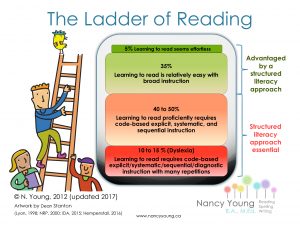Recognizing Dyslexia and Its Implications, Part 1
Doctors and researchers have been recognizing dyslexia since the turn of the century. They just didn’t have a name for it. Now, however, many studies are being done. Nevertheless, little is known.
The International Dyslexia Association (IDA) defines it this way:
“Dyslexia is a specific learning disability that is neurobiological in origin. It is characterized by difficulties with accurate and/or fluent word recognition and by poor spelling and decoding abilities. … Secondary consequences may include problems in reading comprehension and reduced reading experience that can impede growth of vocabulary and background knowledge.”
How common is dyslexia? We don’t really know. The estimates range from five percent up to as high as 20 percent of students and adults. We may have a better estimate soon. Scientists and researchers are learning more about the brain all the time.
Recognizing Dyslexia as Part of Brain Function
For example, Guinevere Eden directs the Center for the Study of Learning at Georgetown University Medical Center. Eden talked about her research in a 2017 interview with APM Reports. “Reading is not a natural skill,” she said. “The brain areas we use for reading were designed more for object recognition.” Earlier man had to quickly recognize a lion were coming toward him. He didn’t need to recognize the difference between a “b” and a “d.”
According to Eden, our visual recognition system tells us when we are looking at a mirror image of an object. When we see a chair turned to the left, we can still recognize it when it is turned to the right.
Dyslexia’s Far Reaching Implications
It’s becoming more and more clear that proficient reading combines the visual system of the brain with the oral language capabilities. Students carefully figure out that the symbols represent sounds. With practice, the translation becomes instantaneous. Sadly, this process is laborious or haphazard for the dyslexic.
The consequences of not recognizing dyslexia in a student are serious. A student may have a hard time distinguishing letters. This produces a lag in their reading, then spelling, then writing. By the fourth grade, a student behind in reading will have increasing difficulties in other subject areas. Of course, it increases the potential for self-esteem issues and bad behavior. To use a metaphor: it’s a snowball rolling downhill!
The Ladder of Reading
Current research offers no magic bullet, but it does offer hope. The experts increasingly agree that a dyslexic can overcome his or her limitations through the development of phonemic awareness. This is the symbol/sound connection that is the foundation of SoundEnglish. Almost any student can master this skill through systematic training and structured phonics.
Take a look at “The Ladder of Reading” infographic, developed by Nancy Young. Structured phonics in the early grades will help all new readers develop. Structured phonics in any grade will benefit dyslexic readers and help them catch up. This approach is a gift for students on the top two rungs of the ladder. It is critical for those on the bottom two rungs.
Soon, hopefully, our schools will begin recognizing dyslexia and its powers. In the mean time, parents should do whatever they can to make sure their students can read.

